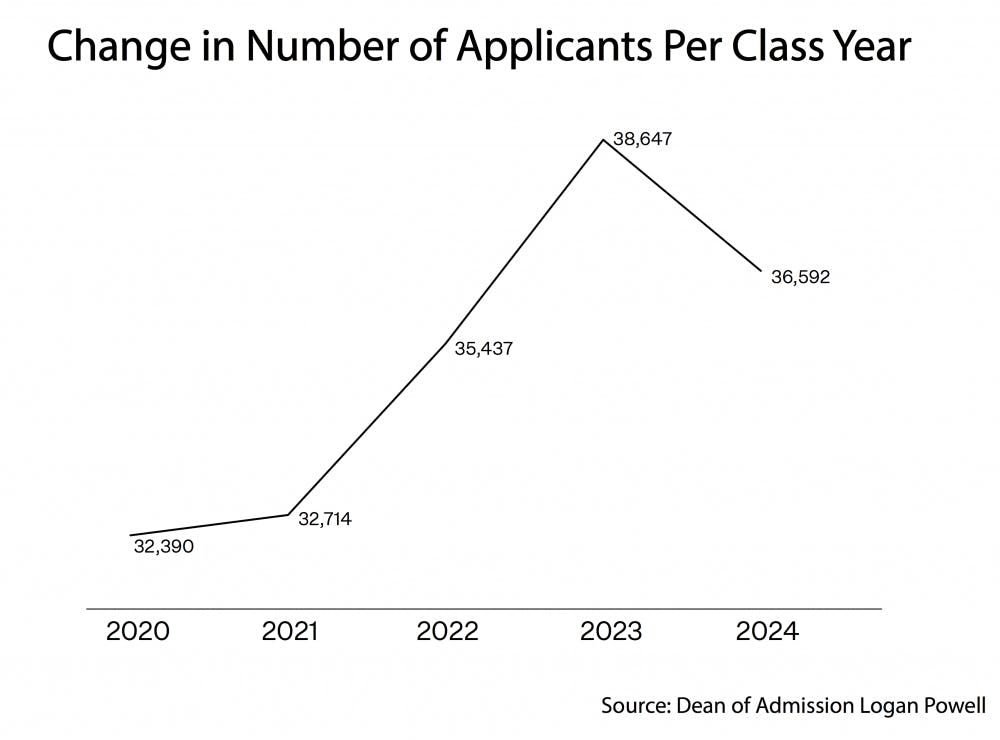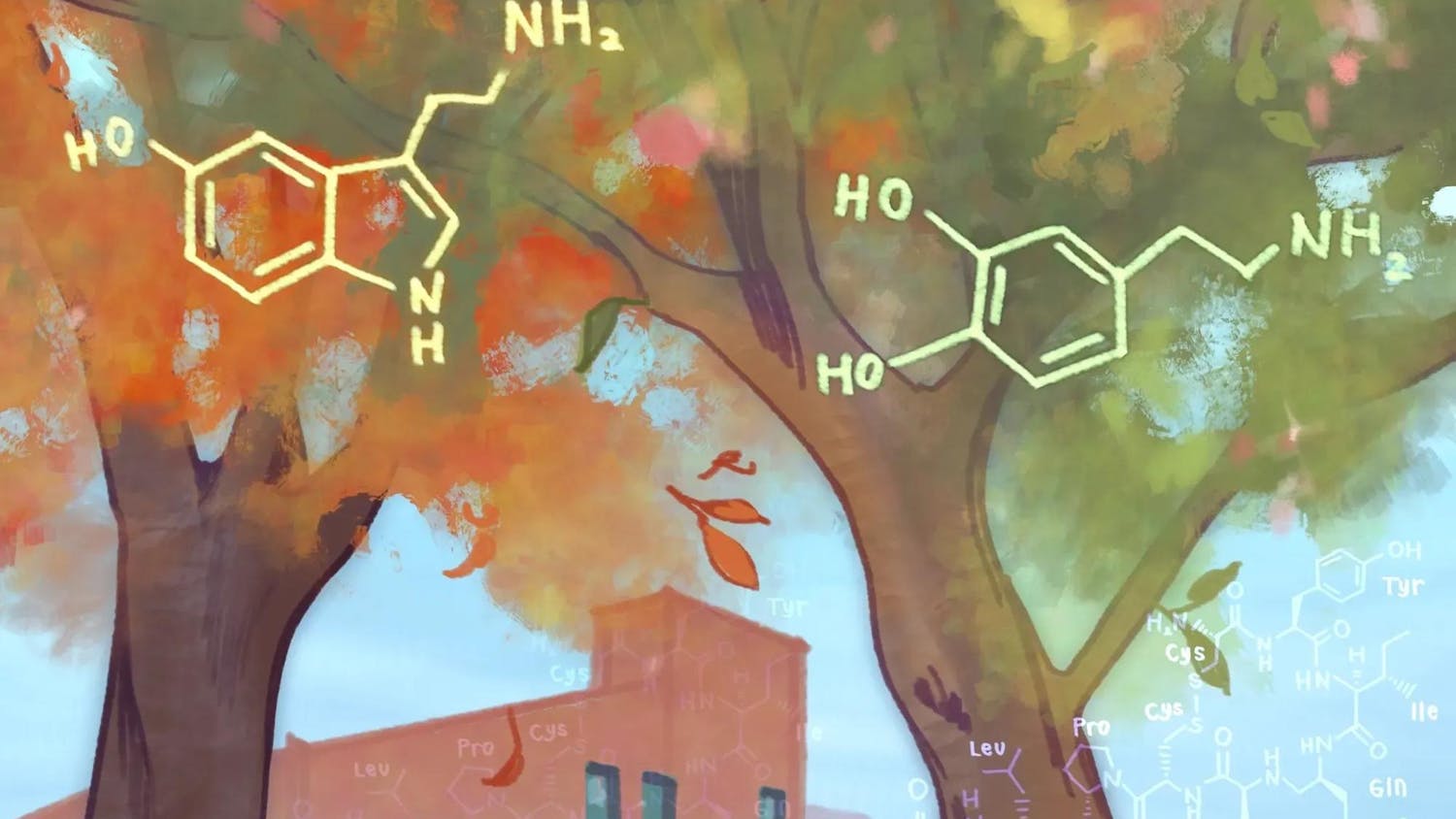The University’s total applicant pool for the class of 2024 dropped five percent from the class of 2023, marking the first drop in applicants since the class of 2016, said Dean of Admissions Logan Powell.
A total of 36,592 students applied this year, Powell said, as opposed to the 38,674 that applied the previous year — making it the second-largest applicant pool in University history despite the drop in applicants. Powell believes the smaller applicant pool will not present a barrier to constructing “the class that will best represent Brown and the values we stand for,” he said. “We can do that with 37,000 applications. No one has ever said to me, ‘There’s a particular applicant volume that we need to hit.’”
Powell said that Brown is likely not the only highly selective school seeing a decrease in applications. Other peer institutions, he said, may also be seeing the same shifts in application volume due to national trends such as fewer students applying from those states that account for the greatest percentage of applicants to the University.
Application volumes don’t increase by default, Powell said, comparing shifts over time to fluctuations in the stock market — there are “peaks and dips,” but there is an upward trend in the long term.
The overall acceptance rate for the class of 2024 won’t necessarily increase as a function of the smaller applicant pool, Powell said. He anticipates the admission rate will be consistent with previous years, especially due to the increased number of students admitted early decision. “It’s still going to be very hard to get into Brown this year,” he said.
Powell also emphasized that demographic trends within the applicant pool have largely remained consistent: Though the total number of applicants has decreased, the drops were proportional across the pool and did not come from one demographic group in particular. “This is going to be a class equal to any we’ve ever admitted to Brown, with an amazingly diverse set of backgrounds and perspectives,” Powell said.
Forty-seven percent of applicants for the class of 2024 self-identified as students of color, a two percent increase from 45 percent of applicants to the class of 2023.
Similarly, geographic diversity in the applicant pool was largely consistent with previous years. While the percent of applicants from New York increased from 10 to 11 percent, and the percent of applicants from California dipped from 16 to 15 percent, no other regions saw any change from the year before. Applicants from the South made up more of the pool than any other region at 17 percent.
The University also increased its outreach to veterans and rural students this year, Powell said. In 2019, the University completed the first year of a two-year pilot program, hosting 20 prospective students from rural communities for an admissions workshop on campus last summer. But Powell noted he did not see a major increase in rural student representation in the applicant pool. “It’s only year one, it’s only 20 students. But I think the word is starting to spread that this is a population of students about whom we care deeply and hope to attract more of in the future,” he said.
International applications increased to 18 percent of the applicant pool for the class of 2024, from 17 percent last year. Applications from first-generation students went down from the class of 2023 to the class of 2024, from 19 percent to 18 percent. Powell added that despite this drop, the University increased outreach this year to community-based organizations such as Prep for Prep and the Teak Fellowship in an effort to attract more first-gen and low-income applicants.
Interest in the Brown/RISD Dual Degree Program and the Program in Liberal Medical Education stayed stagnant, with both programs making up two percent and seven percent, respectively, of the last two applicant classes.
The distribution of academic interests also remained steady. Thirty-two percent of applicants for both the classes of 2023 and 2024 indicated interest in concentrating in the physical sciences, while 27 percent of applicants indicated interest in the social sciences, as opposed to 29 percent last year.
Regular decision results for the class of 2024 will be released Thursday, March 26.

Will Kubzansky was the 133rd editor-in-chief and president of the Brown Daily Herald. Previously, he served as a University News editor overseeing the admission & financial aid and staff & student labor beats. In his free time, he plays the guitar and soccer — both poorly.





